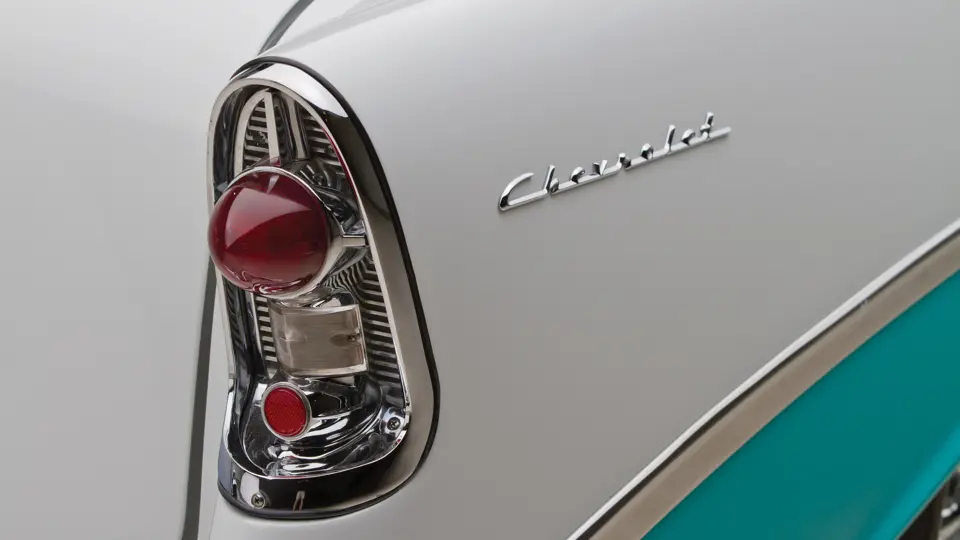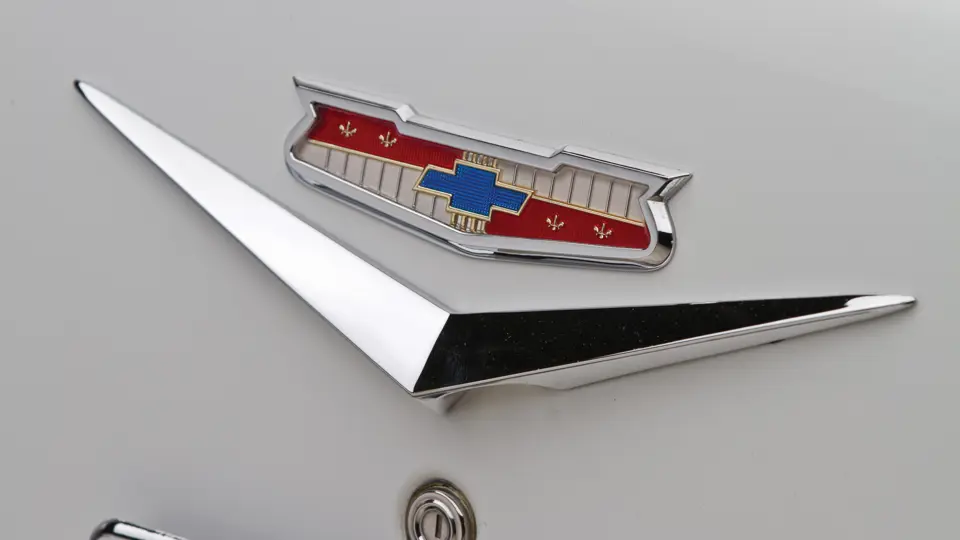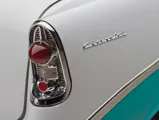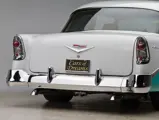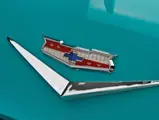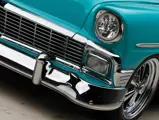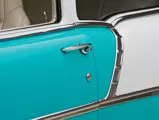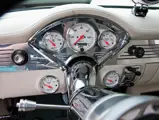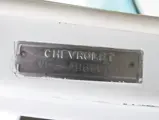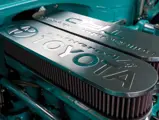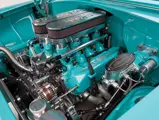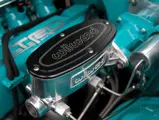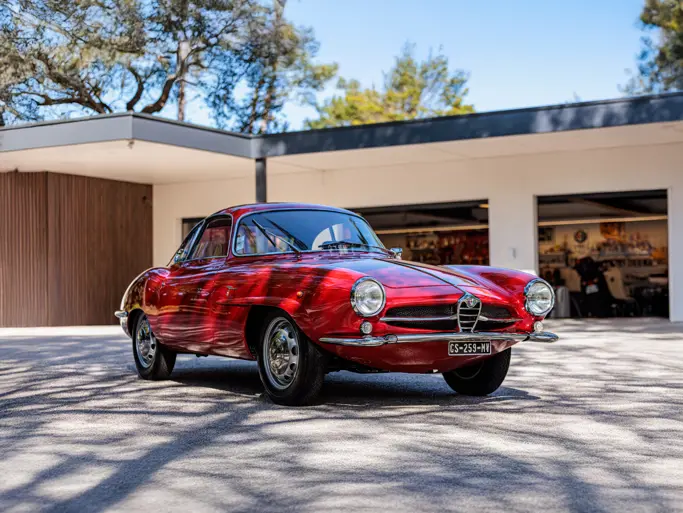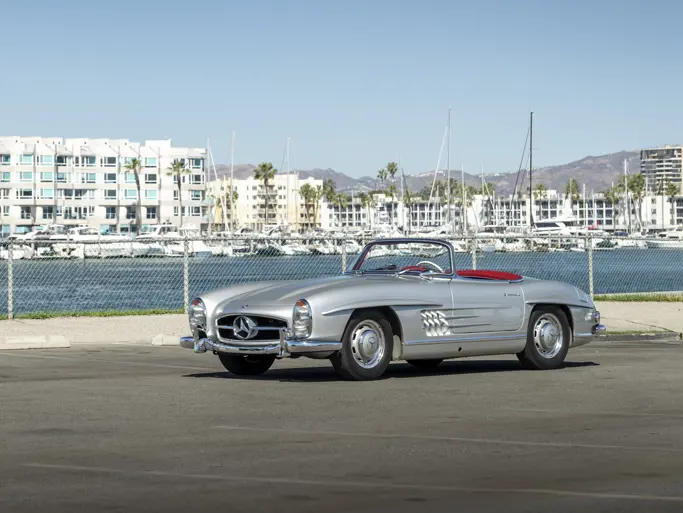An outstanding, mechanical custom example
650 bhp, 358 cu. in. TRD OHV V-8 engine, four-speed Hydra-Matic transmission, coil spring independent front suspension, live rear axle with coil-over-shock trailing arms, and four-wheel power disc brakes. Wheelbase: 115.0 in.
A first glance at this car hints that all is not stock. Huge 18-inch chrome Cragar wheels, say “street rod,” confirmed by a look inside, where lush white leather buckets and a matching console hold sway. The odds-maker would say there is a 502 big block under the hood—this is a Chevrolet, after all. But the odds-maker would be so wrong. Can you spell T-o-y-o-t-a?
People often don’t think of Toyota as muscle cars. Grand Prix and Formula Ones, yes. Toyota has had naming rights for the Long Beach Grand Prix since 1975 and has actively pursued Formula One glory for a decade in the 2000s. The team came together in 1999 and made its circuit debut in 2002. But by the time the plug was pulled in 2009, all they had to show for their trouble was a burst of second-place seasons, in 2005, 2008, and 2009. And all that effort involved high-revving V-10 engines, not the thing you’d put in a two-door “post” Chevy sedan.
Actually, the secret to this car is NASCAR, specifically the Craftsman Truck Series. Toyota was aggressively marketing its full-size Tundra pickup as an alternative to the Chevy Silverado, Ford F-series, and Dodge Ram. Where better to get some respect than in the Truck Series where the American Big Three were already racing. But there were rules, NASCAR rules.
NASCAR regulations were written around the status quo and were designed to keep things competitive, without being too competitive. Engines were constrained to 16-valve pushrod V-8s, between 350 and 358 cubic inches. Toyota had V-8s, certainly, but they were of overhead-cam design. Other constraints concerned compression (no greater than 12.0 to 1), a mechanical distributor, a single coil, single oil pump, and a single four-barrel carb. Thus, a new engine was called for.
Toyota Racing Development came up with the engine block, heads, valve seats and guides, and the valley cover. Other parts were outsourced to well-known NASCAR suppliers: Edelbrock, Crane, Drake, Holley, and the like. When finished, the Toyota NASCAR V-8 was developing more than 700 horsepower at 9,000 revs.
It was the first import in NASCAR. Toyota’s first win came from Travis Kvapil at Michigan International Speedway, during the initial 2004 season. Todd Bodine gave them the first-ever championship by winning the NASCAR Craftsman Truck Series Title in 2006, a feat repeated by Johnny Benson in 2008. Other well-known drivers racing in the series, now known as the Camping World Truck Series, have included Kimi Räikkönen and Nelson Piquet Jr. Since 2009, Toyota has been the only company furnishing factory support.
Putting the TRD V-8 in a Chevy was child’s play. It’s no bigger than a Chevrolet small block, and the block is cast to mate to a Hydra-Matic transmission. The sturdy 4L80E electronic unit was chosen, as used in heavy duty pickups and Suburbans. Control is all-electronic, as is the Hilborn fuel injection. The chassis has been updated with power rack-and-pinion steering, a coil-over-shock trailing arm rear suspension, and four-wheel power disc brakes. An aluminum cross-flow radiator is used.
Inside are the comforts one expects: air conditioning, power windows, seat belts, a LeCarra steering wheel on a modern tilt column, Auto Meter gauges in the original dashboard, and a JVC stereo. An electronic tachometer rides high on the dashboard. Both the exterior and interior are finished in the popular 1956 Chevy motif of Nassau Blue and white, even the luggage compartment. There is matching blue carpet on the floor and a white headliner.
The engine compartment is best described as “restrained.” The air cleaners proudly boast “TOYOTA,” but the only bright spots are polished aluminum ancillaries. Interestingly, the hood hinges are machined out of billet stock. Tiny struts hold it open. The Cragar wheels mount P225/40ZR18 Capitol Sport UHP tires.
So, is the Toyota TRD NASCAR engine the small block Chevy of the 21st century? Only time will tell, but it has certainly improved the performance of this extraordinary, one-of-a-kind Bel Air.




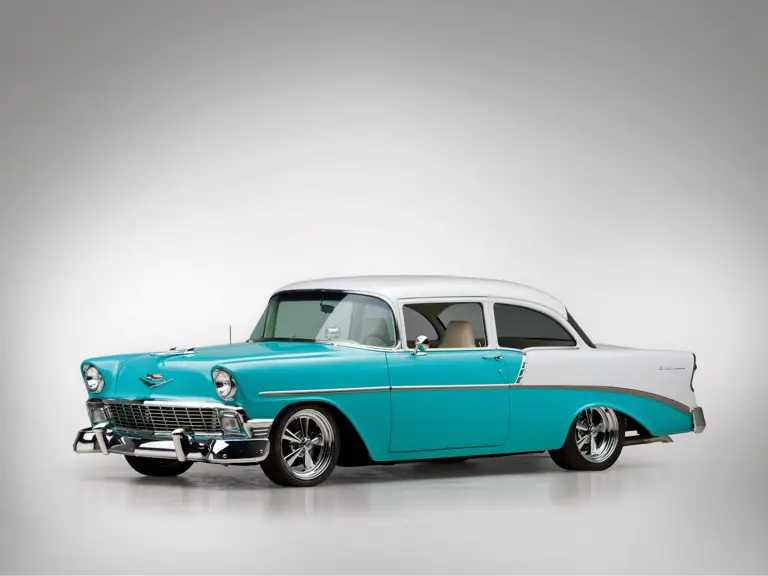
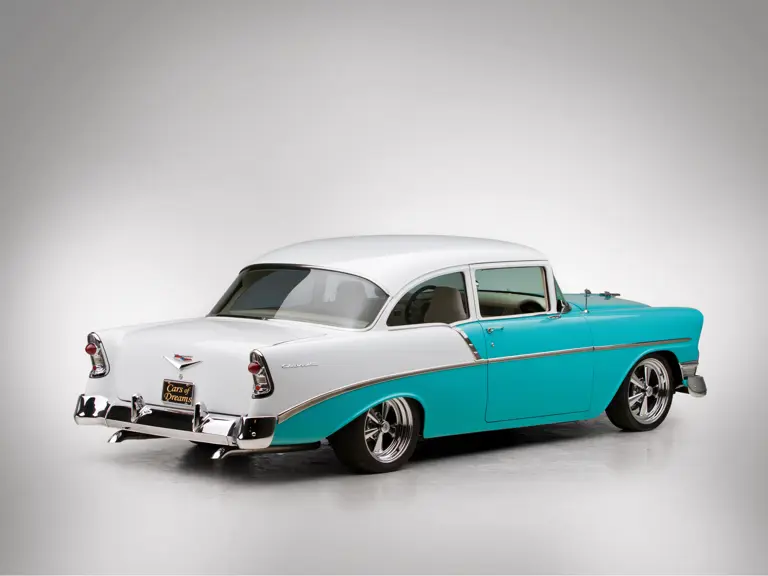
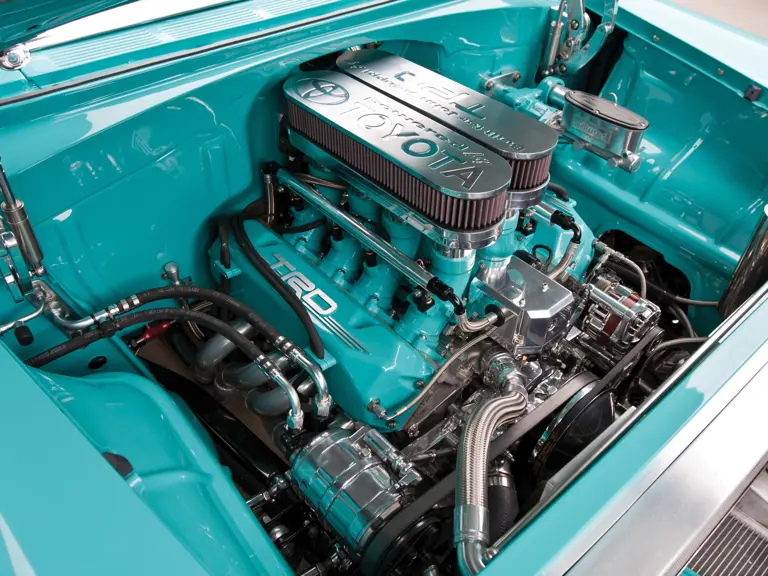
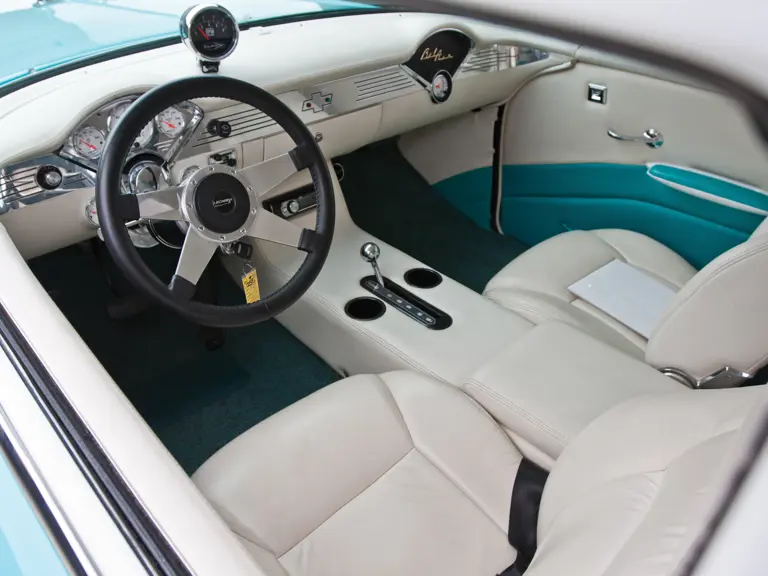
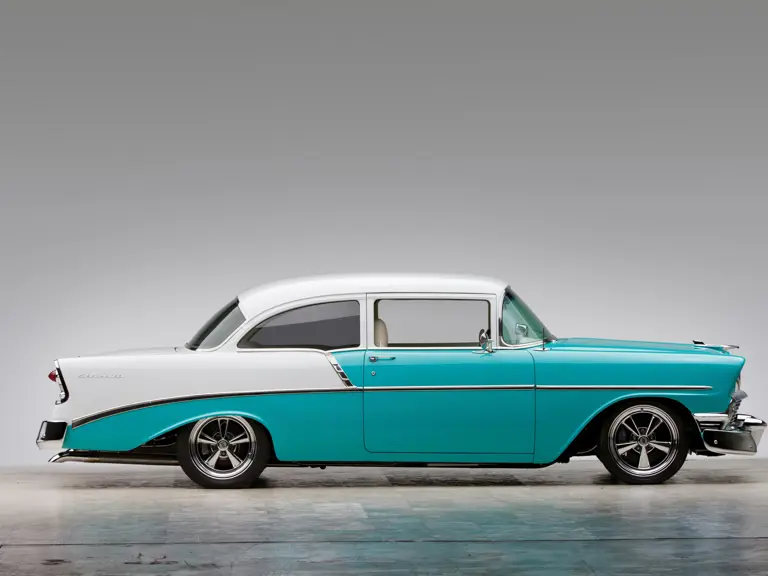
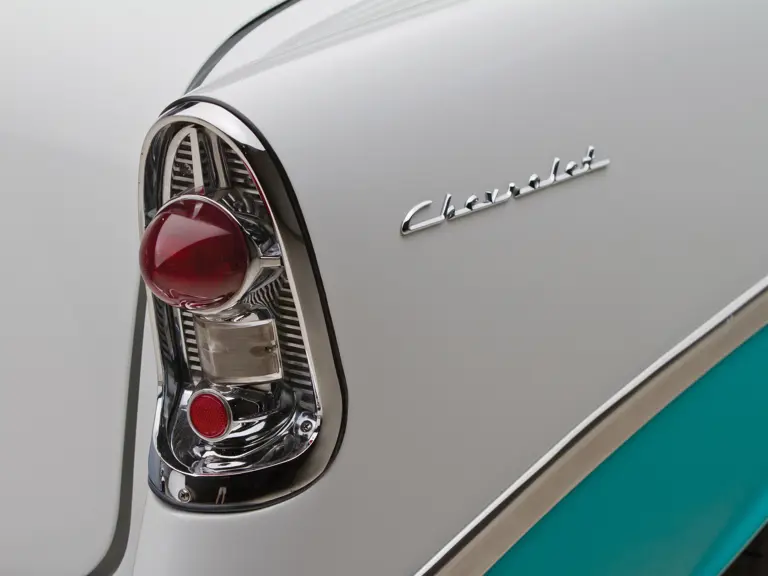
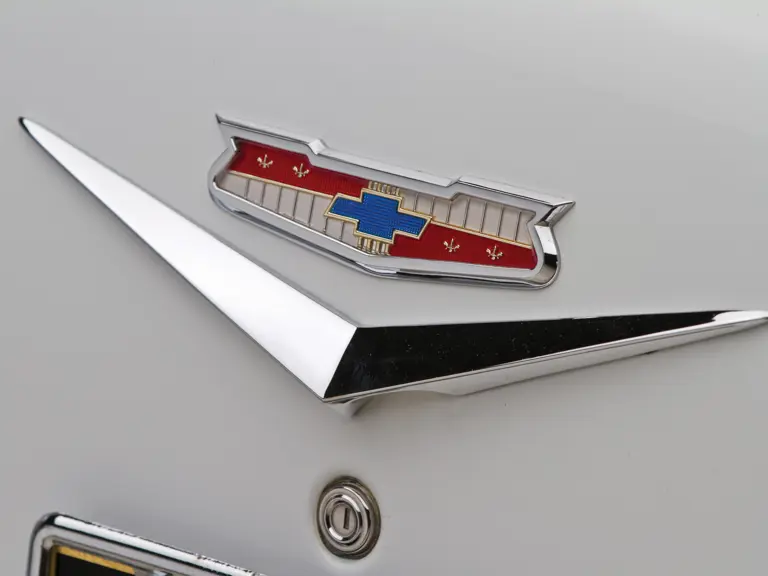
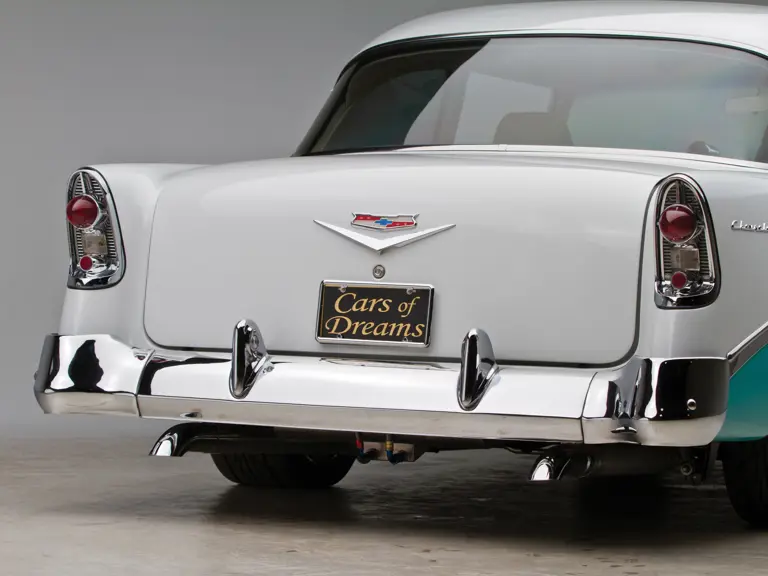
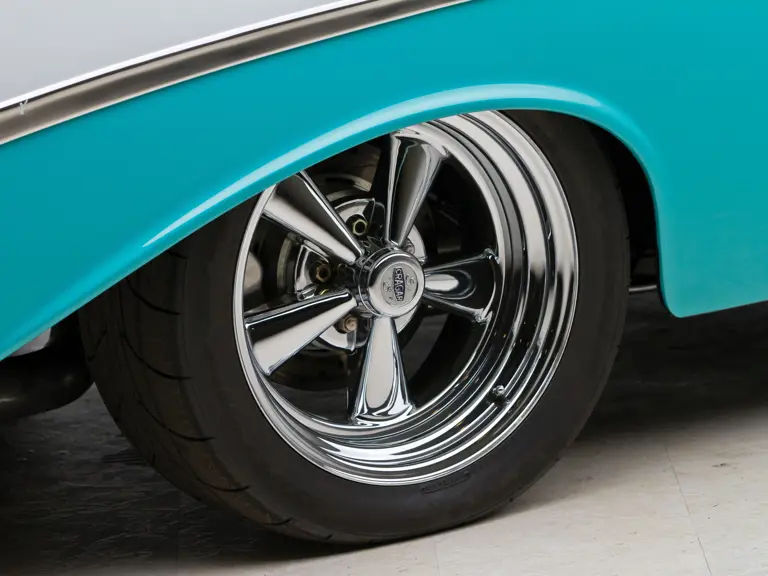
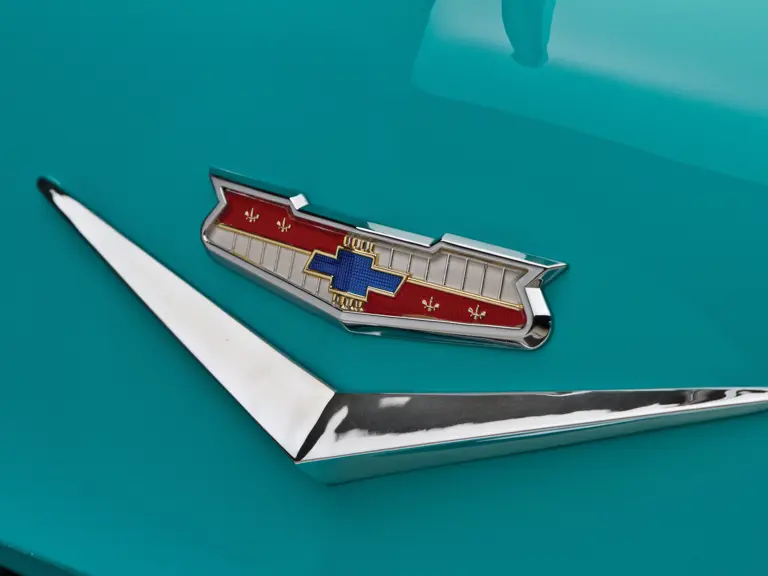

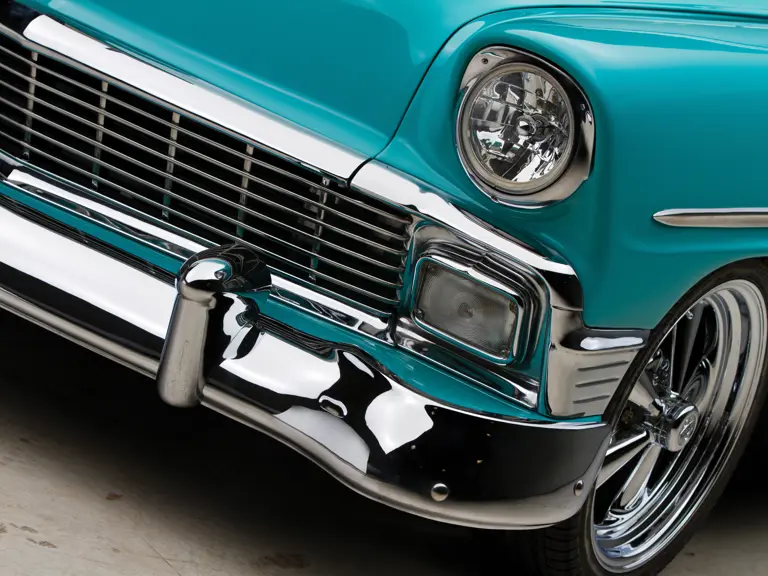
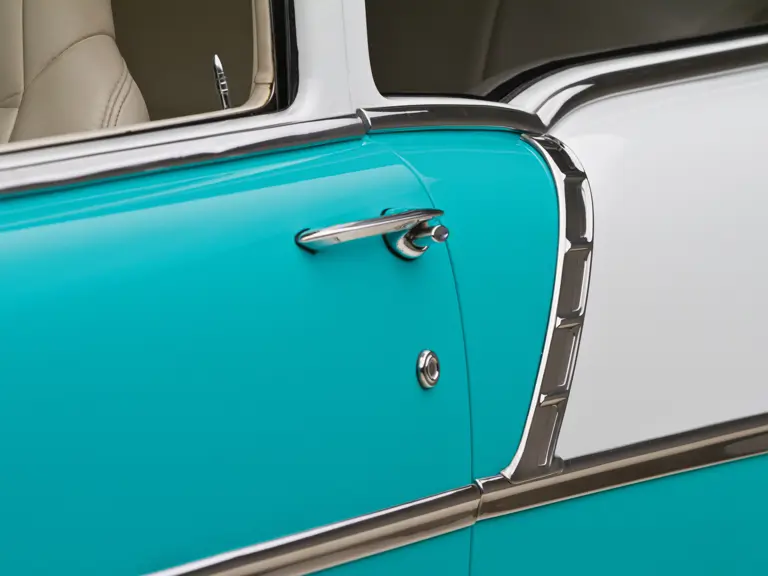

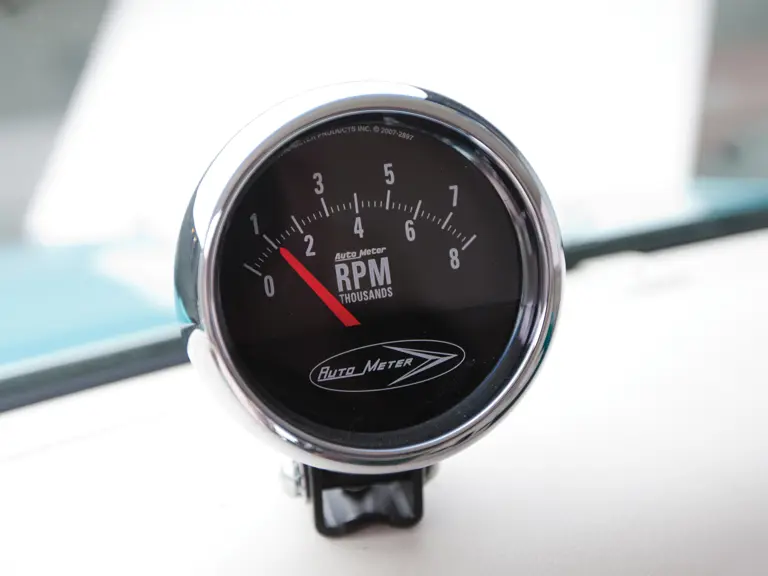

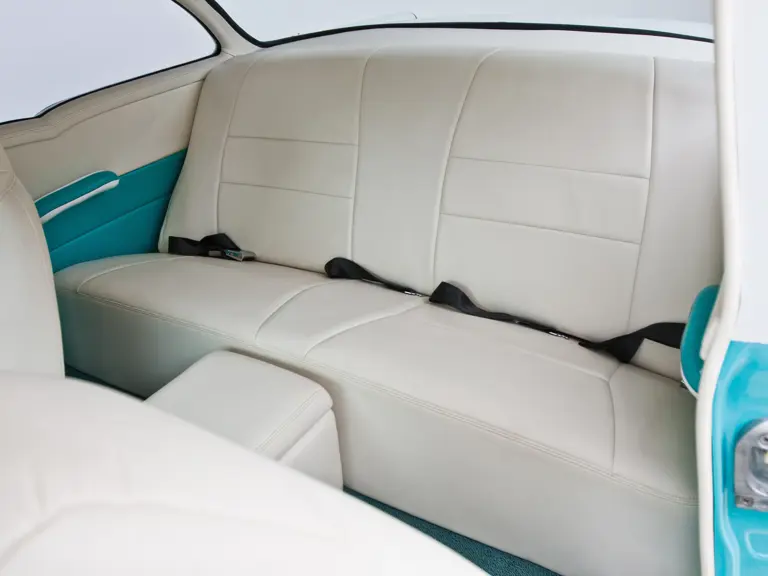
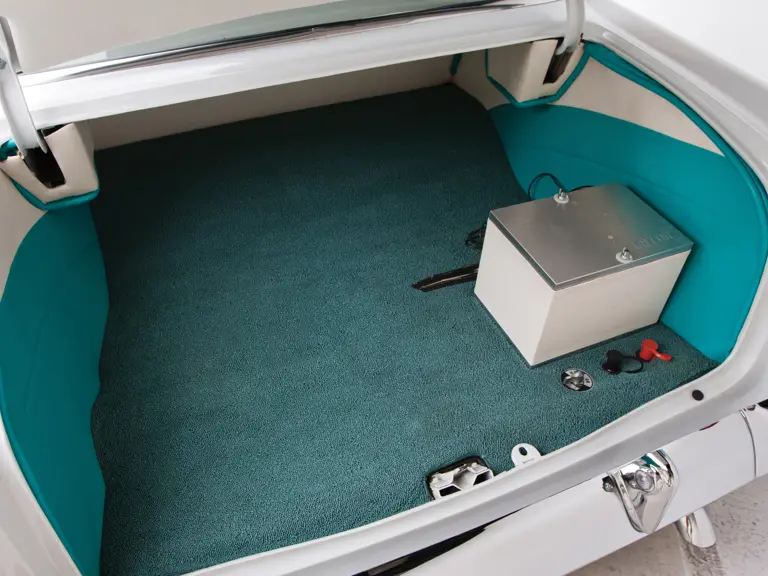

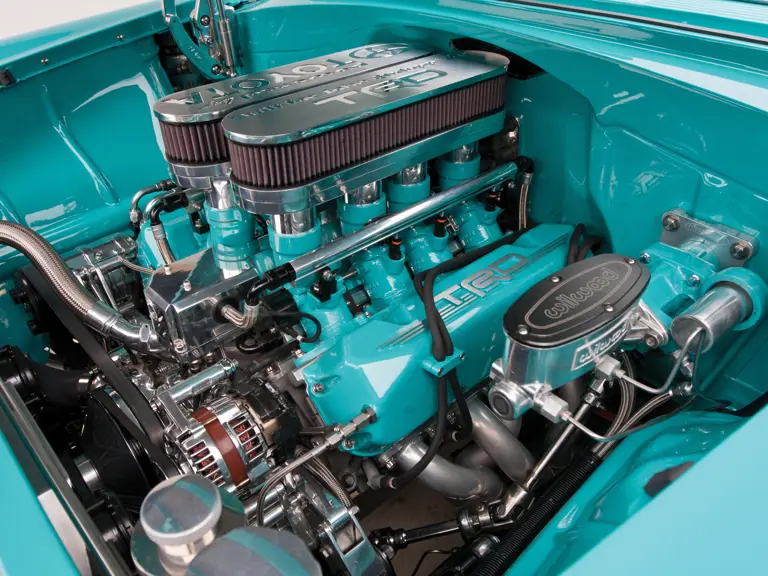

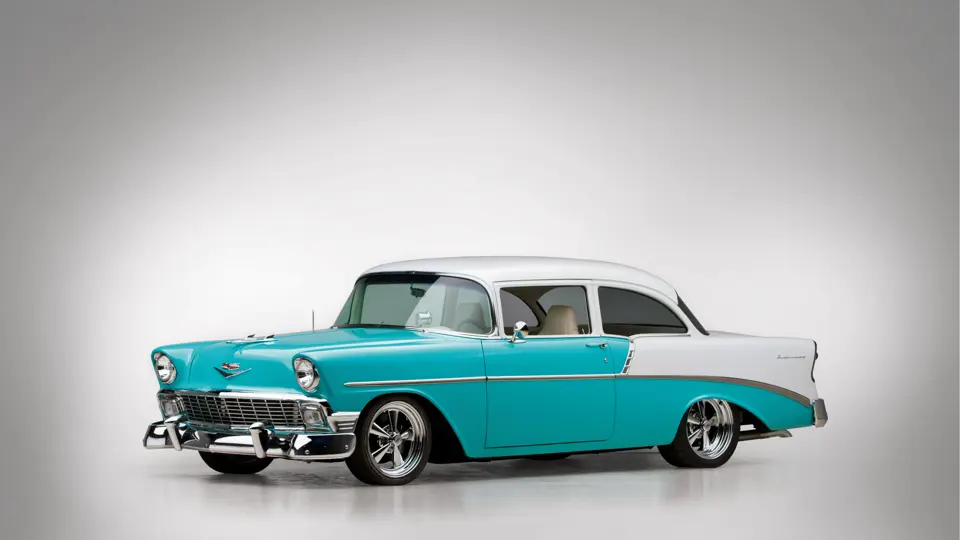
 | North Palm Beach, Florida
| North Palm Beach, Florida

